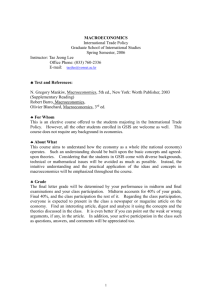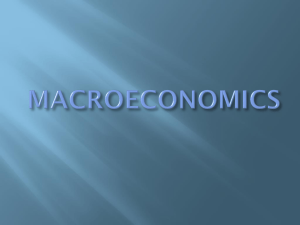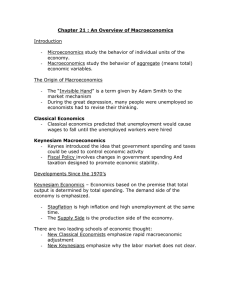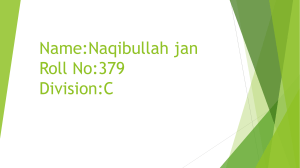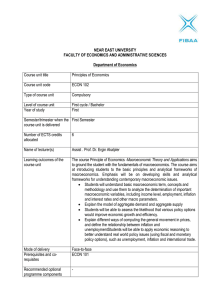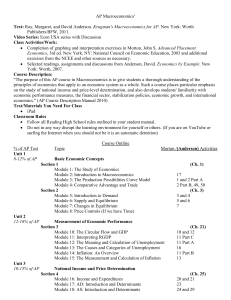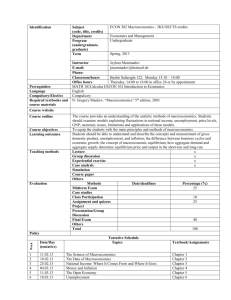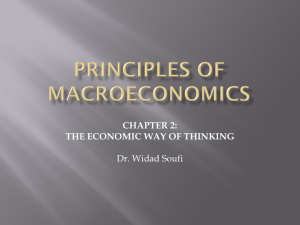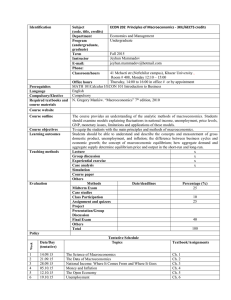ECE Macroeconomics-Syllabus
advertisement
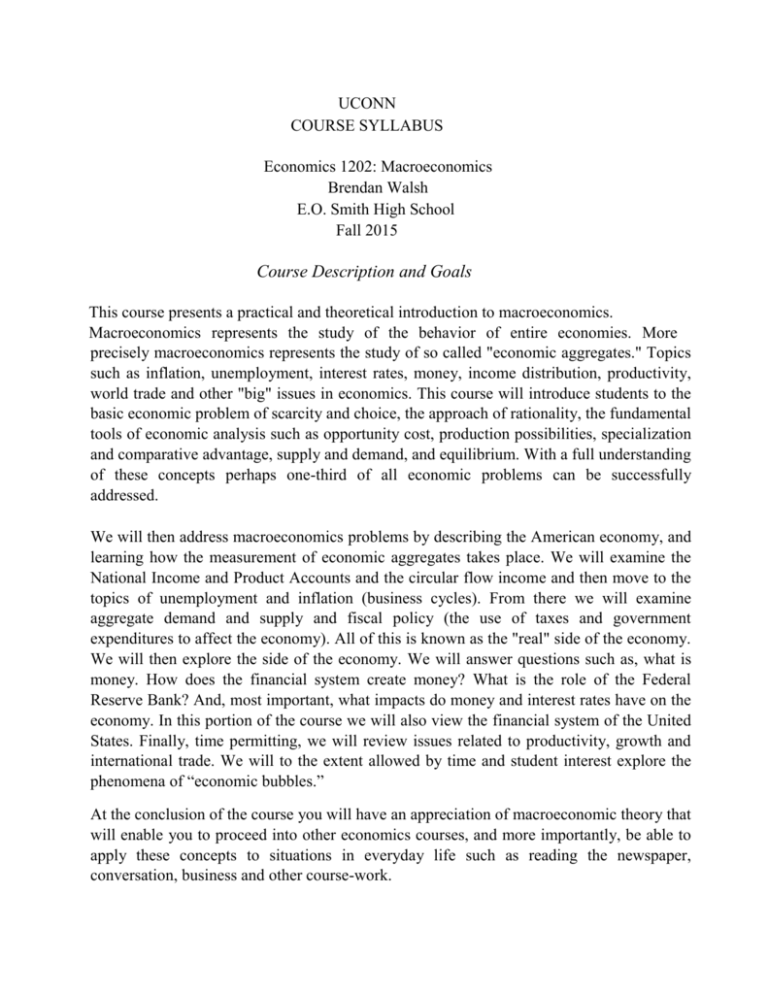
UCONN COURSE SYLLABUS Economics 1202: Macroeconomics Brendan Walsh E.O. Smith High School Fall 2015 Course Description and Goals This course presents a practical and theoretical introduction to macroeconomics. Macroeconomics represents the study of the behavior of entire economies. More precisely macroeconomics represents the study of so called "economic aggregates." Topics such as inflation, unemployment, interest rates, money, income distribution, productivity, world trade and other "big" issues in economics. This course will introduce students to the basic economic problem of scarcity and choice, the approach of rationality, the fundamental tools of economic analysis such as opportunity cost, production possibilities, specialization and comparative advantage, supply and demand, and equilibrium. With a full understanding of these concepts perhaps one-third of all economic problems can be successfully addressed. We will then address macroeconomics problems by describing the American economy, and learning how the measurement of economic aggregates takes place. We will examine the National Income and Product Accounts and the circular flow income and then move to the topics of unemployment and inflation (business cycles). From there we will examine aggregate demand and supply and fiscal policy (the use of taxes and government expenditures to affect the economy). All of this is known as the "real" side of the economy. We will then explore the side of the economy. We will answer questions such as, what is money. How does the financial system create money? What is the role of the Federal Reserve Bank? And, most important, what impacts do money and interest rates have on the economy. In this portion of the course we will also view the financial system of the United States. Finally, time permitting, we will review issues related to productivity, growth and international trade. We will to the extent allowed by time and student interest explore the phenomena of “economic bubbles.” At the conclusion of the course you will have an appreciation of macroeconomic theory that will enable you to proceed into other economics courses, and more importantly, be able to apply these concepts to situations in everyday life such as reading the newspaper, conversation, business and other course-work. REQUIRED TEXT The principal textbook for this course is Paul Krugman and Robin Wells, Krugman’s Macroeconomics for AP LEARNING OBJECTIVES At the conclusion of the course you will have an appreciation of macroeconomic theory that will enable him or her to proceed into other economics courses, and more importantly, be able to apply these concepts to situations in everyday life such as reading the newspaper, conversation, business and other course-work. COURSE POLICIES • • • Attendance requirements will follow those highlighted in the student handbook Academic Misconduct will be handled on a case by case basis Plagiarism will be handled per the E.O. Smith Student Handbook guidelines ASSIGNMENT SUMMARY Overview and Introduction - What is Economics all about? Supply and Demand and Other Basics An Introduction to Macroeconomics, The National Income and Product Accounts The Circular Flow and Unemployment, Inflation and Productivity The Circular Flow continued Aggregate Demand and Supply Introduction to Aggregate Expenditures Aggregate Demand, Supply Aggregate Expenditure and Income Supply in Long and Short Runs Introduce Fiscal Policy Introduce Money, Banking, Monetary Theory & Policy Monetary Policy Debates International Trade & Finance Global Economy The ‘Bubble Economy’


